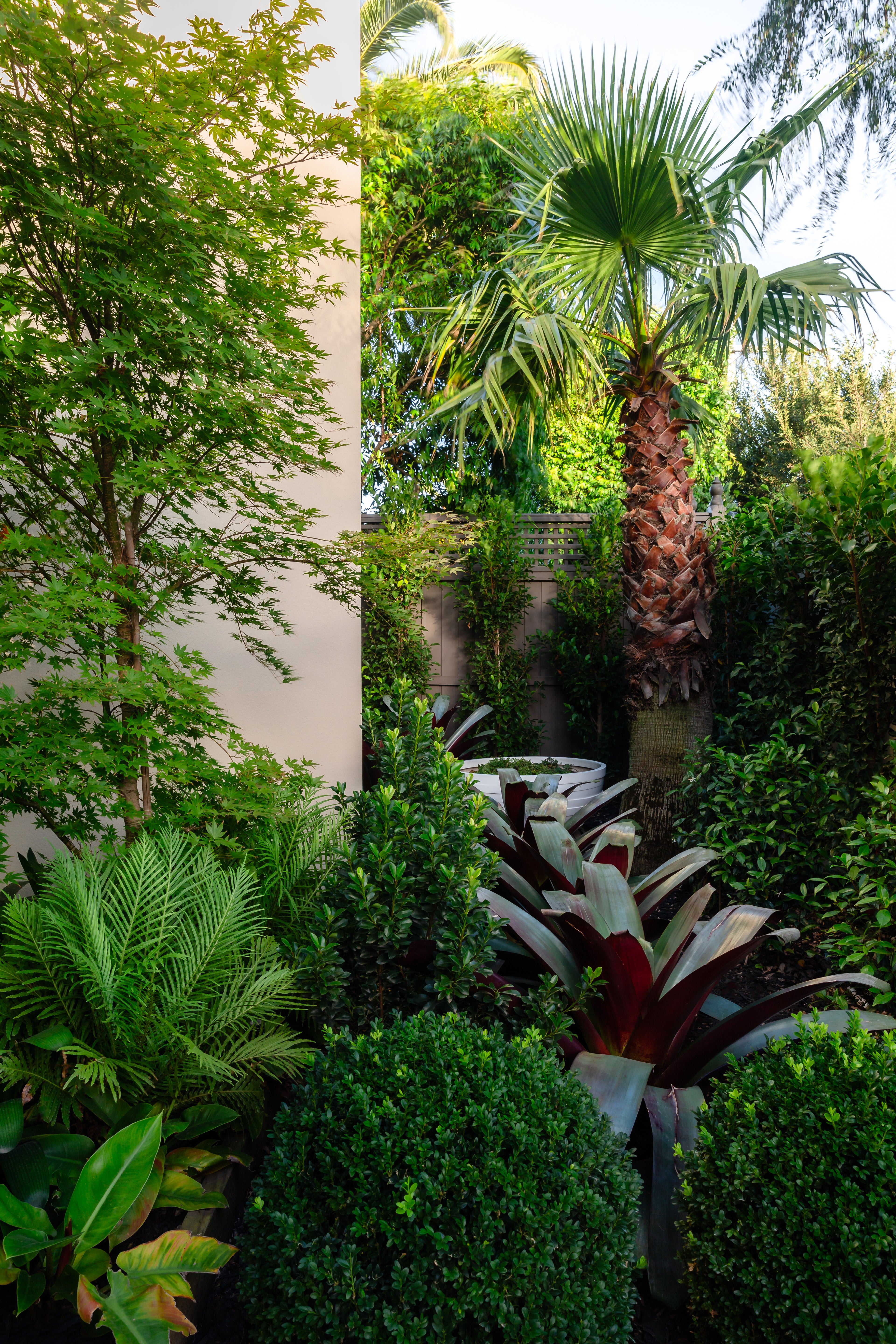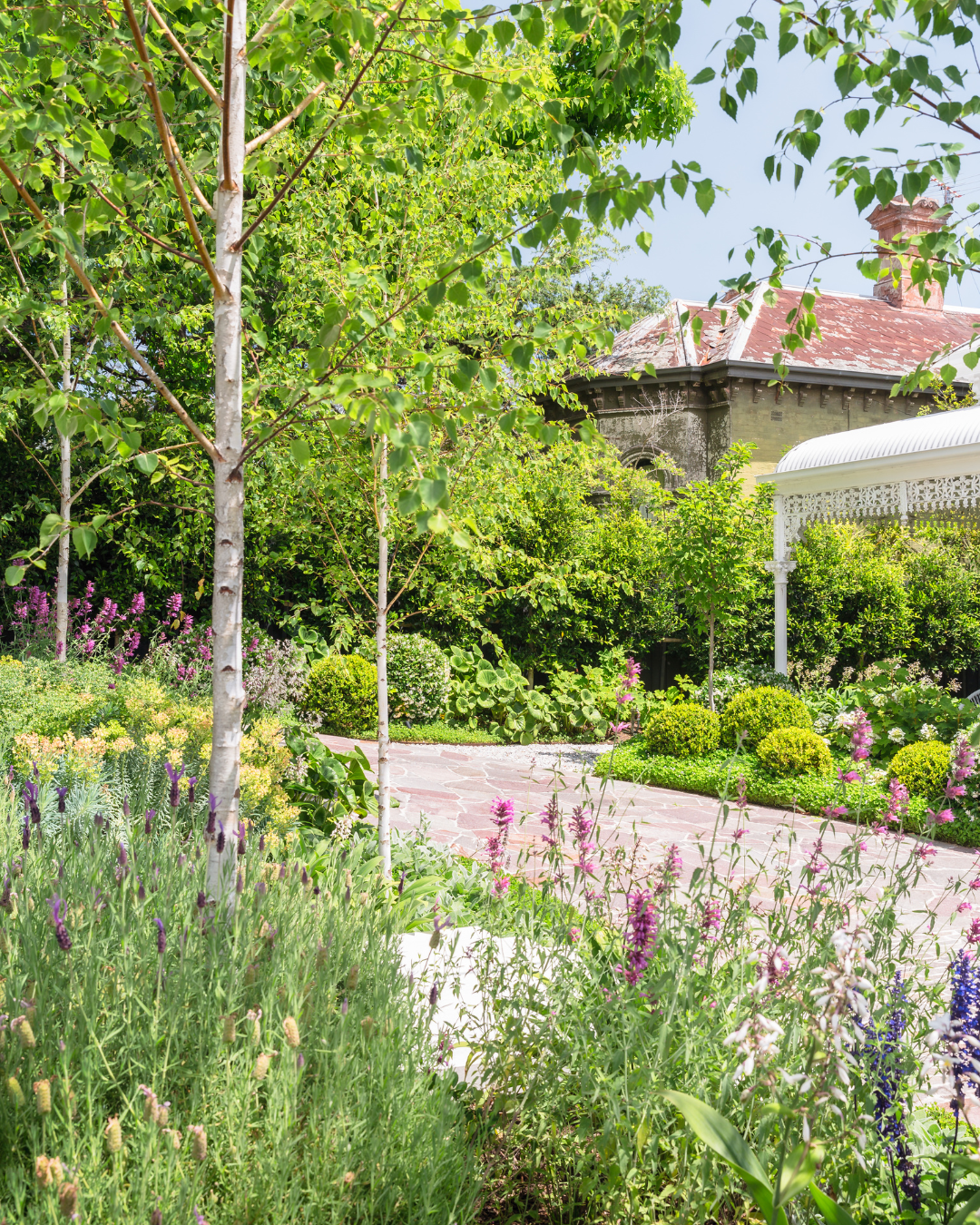Choosing trees is pivotal when designing a garden that thrives in beauty and biodiversity. Selecting trees that enhance your outdoor space and provide habitats and food sources for native wildlife is essential. Among the standout options, Corymbia maculata (Spotted Gum), Eucalyptus viminalis (Manna Gum), and Grevillea robusta (Silky Oak) are exceptional choices. These trees offer unique benefits that contribute to a vibrant ecosystem, making them perfect additions to high-end gardens.
Corymbia maculata (Spotted Gum)
Corymbia maculata, commonly known as Spotted Gum, is a stunning tree renowned for its beautiful bark, featuring a patchwork of mottled colors. This species is visually appealing and a vital component of the local ecosystem. The Spotted Gum produces copious amounts of nectar, attracting various birds and insects, thereby creating a lively environment. Its robust structure also offers shelter for wildlife, making it an invaluable addition to your garden.
Key Facts
- Mature Height: Up to 40 meters
- Mature Width: 10-15 meters
- Best Uses: Feature tree, shade tree
- Leaf Appearance: Lance-shaped, glossy green leaves
- Rate of Growth: Moderate
- Tolerates: Drought, coastal conditions, and poor soil

Why It's Perfect to Add to Your Garden
The Spotted Gum is a focal point in your garden while supporting local wildlife. Its nectar-rich flowers are a food source for bees and birds, enhancing the biodiversity of your landscape. The tree's dense canopy also provides shelter for various animals, making it a natural habitat. Its ability to thrive in multiple soil conditions makes it a low-maintenance option, allowing you to enjoy a vibrant garden without extensive upkeep.
- Erosion Control: The extensive root system of the Spotted Gum helps stabilize the soil, making it an excellent choice for sloped areas or gardens prone to erosion.
- Cultural Significance: This tree has a rich history in Indigenous Australian culture, often used for its strong timber and as a source of food and shelter.
Eucalyptus viminalis (Manna Gum)
Eucalyptus viminalis, or Manna Gum, is a tall, elegant tree with long, slender leaves and smooth, pale bark. Known for its striking appearance and ability to attract wildlife, the Manna Gum produces sweet sap that nourishes a range of fauna, including koalas, which are particularly fond of its leaves. The tree also provides a natural habitat for various bird species, enhancing its ecological value.
Key Facts
- Mature Height: 20-30 meters
- Mature Width: 10-15 meters
- Best Uses: Shade trees, wildlife habitat
- Leaf Appearance: Long, narrow leaves that are blue-green in color
- Rate of Growth: Fast
- Tolerates: Drought and poor drainage

Why It's Perfect to Add to Your Garden
The Manna Gum's rapid growth and generous canopy provide essential shade that is ideal for larger gardens. Its foliage supports koalas and attracts many birds and insects, enriching your garden's ecological tapestry. Furthermore, its adaptability to various soil types means it can thrive in challenging conditions. By planting a Manna Gum, you’re enhancing your garden’s aesthetic appeal and fostering a thriving wildlife community.
- Fodder Source: The Manna Gum leaves are a vital food source for koalas and other native herbivores, supporting local wildlife populations.
- Attractive Bark: The smooth, shedding bark of the Manna Gum adds visual interest to your landscape, creating a dynamic appearance throughout the seasons.
Grevillea robusta (Silky Oak)
Grevillea robusta, known as Silky Oak, is popular for its striking flowers and beautiful foliage. This tree produces clusters of bright orange-yellow flowers that attract birds and bees, making it essential for those looking to support local fauna. Its distinctive, finely divided leaves add texture to any garden setting and provide shelter for smaller wildlife.
Key Facts
- Mature Height: 20-30 meters
- Mature Width: 10-15 meters
- Best Uses: Feature tree, shade provider
- Leaf Appearance: Fern-like, dark green leaves
- Rate of Growth: Moderate to fast
- Tolerates: Drought and coastal winds

Why It's Perfect to Add to Your Garden
The Silky Oak is visually stunning and is a magnet for local wildlife. Its flowering period draws in various birds, particularly honeyeaters, who rely on its nectar for sustenance. Its sturdy structure and wide canopy also provide essential cover for smaller animals. The tree’s adaptability to various conditions and low maintenance make it a valuable investment for a luxury garden that prioritizes ecological balance.
- Soil Improvement: The Silky Oak contributes to soil health by fixing nitrogen, enhancing nutrient availability for surrounding plants.
- Windbreak Potential: This tree can act as an effective windbreak, making it suitable for protecting more delicate plants in your garden.
Conclusion
Choosing trees that support local fauna, such as Corymbia maculata (Spotted Gum), Eucalyptus viminalis (Manna Gum), and Grevillea robusta (Silky Oak), is a wise decision for any high-end garden. These trees enhance the aesthetic appeal of your outdoor space and foster a vibrant ecosystem. Integrating these species into your garden design will create a thriving environment that attracts and sustains local wildlife, ultimately contributing to a healthier planet.
FAQs
-
How do these trees benefit local wildlife?
Each of these trees provides essential food sources—nectar and foliage—that attract birds, insects, and other wildlife, promoting biodiversity in your garden. -
What are the maintenance requirements for these trees?
All three species are relatively low-maintenance, with the Spotted Gum and Manna Gum thriving in various soil conditions. The Silky Oak may require occasional pruning to maintain its shape. -
Can these trees be planted in smaller gardens?
While these trees are suited for larger spaces, smaller varieties or younger specimens can be planted in medium-sized gardens, considering their growth potential. -
How can I incorporate these trees into my existing garden?
Consider planting them as feature trees or in clusters to create a natural canopy that supports local fauna while providing shade and beauty to your space.










